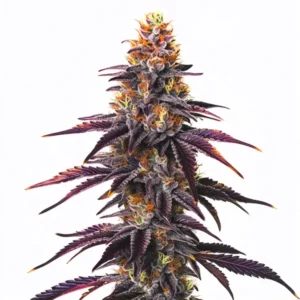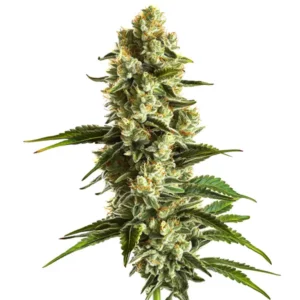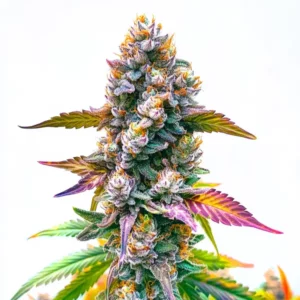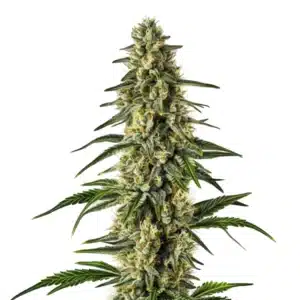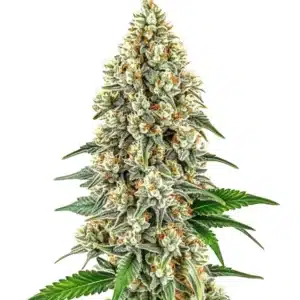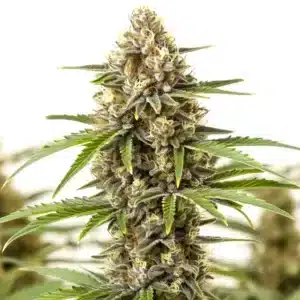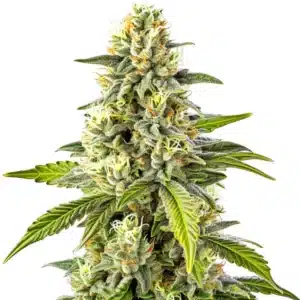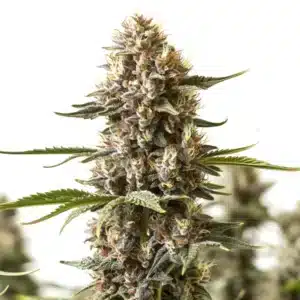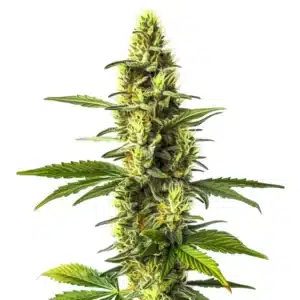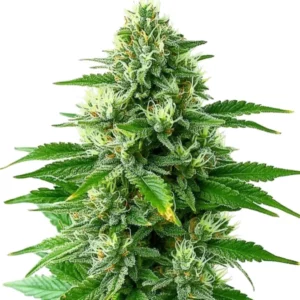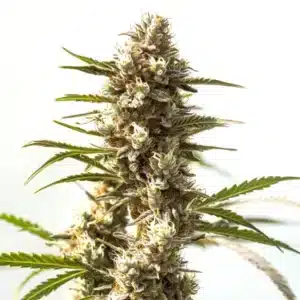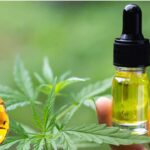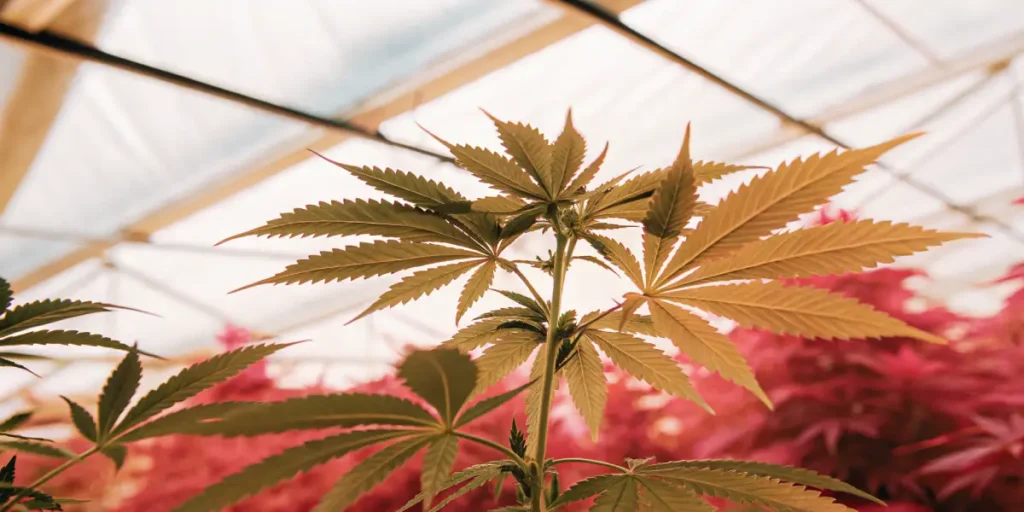
What Is the Role of Photoreceptors in Cannabis?
What Is the Role of Photoreceptors in Cannabis? Photoreceptors in cannabis are like a GPS for your plants. They guide growth, flowering, and even THC levels. Growing cannabis involves more than just planting seeds and watering. It’s about understanding how light affects your plants at a cellular level. Photoreceptors are the tiny proteins in plant cells that absorb light and tell the plant what to do next.
For first-time growers and seasoned experts, grasping how these receptors work can make a huge difference. Think about the strain Blue Dream from Blimburn Seeds. This strain flourishes when you get the light conditions just right. Photoreceptors play a critical role in making sure your plants reach their full potential. This isn’t just science talk; it’s practical advice for better yields.
Recommended Strains
Runtz
|
|
THC | 19% - 22% (Medium) |
|
|
Type | Feminized |
|
|
Yield | Medium |
|
|
Phenotype | 50% Indica / 50% Sativa |
Banana Kush
|
|
THC | 17% - 21% (Medium) |
|
|
Type | Feminized |
|
|
Yield | High |
|
|
Phenotype | 60% Indica / 40% Sativa |
Ask any experienced grower, and they’ll tell you: knowing what is the role of photoreceptors in cannabis can turn a good harvest into a great one. Your plants depend on these receptors to know when to grow, when to flower, and when to produce resin. Getting it right means your plants will reward you with a bountiful harvest.
Photoreceptor Types in Cannabis Cultivation
Photoreceptors are not all the same. In cannabis, the main types include phytochromes and cryptochromes. Phytochromes are sensitive to red and far-red light. They help the plant decide whether to grow taller or start flowering. Cryptochromes, on the other hand, are sensitive to blue light and influence how the plant grows leaf and stem tissue.
Let’s take the strain Banana Kush from Blimburn Seeds as an example. This strain is known for its potent effects and high THC levels. By understanding the different types of photoreceptors, you can manipulate light to boost your plant’s performance. For instance, increasing blue light exposure can enhance leaf development, making your Banana Kush plants bushier and more robust.
Knowing the function of photoreceptors in cannabis plant growth means recognizing how each receptor type influences different growth stages. Phytochromes and cryptochromes work together to help the plant adjust to its environment, optimizing its growth strategies. For growers, knowing how to leverage these receptors in various strains can lead to more effective cultivation practices.
Furthermore, recent advances in LED lighting technology have made it easier than ever to tailor light exposure to the specific needs of cannabis photoreceptors. By customizing light setups to cater to the unique photoreceptor types in cannabis cultivation, growers can maximize both the quality and quantity of their yields. This nuanced approach underscores the importance of understanding what is the role of photoreceptors in cannabis.
Promos & Deals
How Photoreceptors Affect Cannabis Flowering
Flowering is a critical phase in cannabis cultivation. Photoreceptors play a central role here. They help the plant determine when it’s time to shift from vegetative growth to flowering. The shift happens when the plant senses a change in the light cycle, usually from longer to shorter days.
For growers, manipulating this process can lead to earlier or more abundant flowering. The Runtz strain from Blimburn Seeds is a perfect candidate for such techniques. By adjusting light exposure, you can encourage your plants to flower when you want them to, maximizing yield and potency.
The role of photoreceptors in cannabis plant growth extends to their ability to fine-tune the timing of flowering. By understanding how photoreceptors affect cannabis flowering, growers can create an environment that signals the plant to produce flowers at the optimal time. This not only enhances the quality of the buds but can also synchronize the flowering stage with the grower’s harvest schedule.
Besides, the manipulation of light cycles to influence flowering is a technique used to produce specific traits in cannabis strains. By adjusting the duration and intensity of light, growers can experiment with different flowering times, potentially leading to unique expressions of flavor, aroma, and potency. This highlights how photoreceptors affect cannabis flowering and the importance of strategic light management.
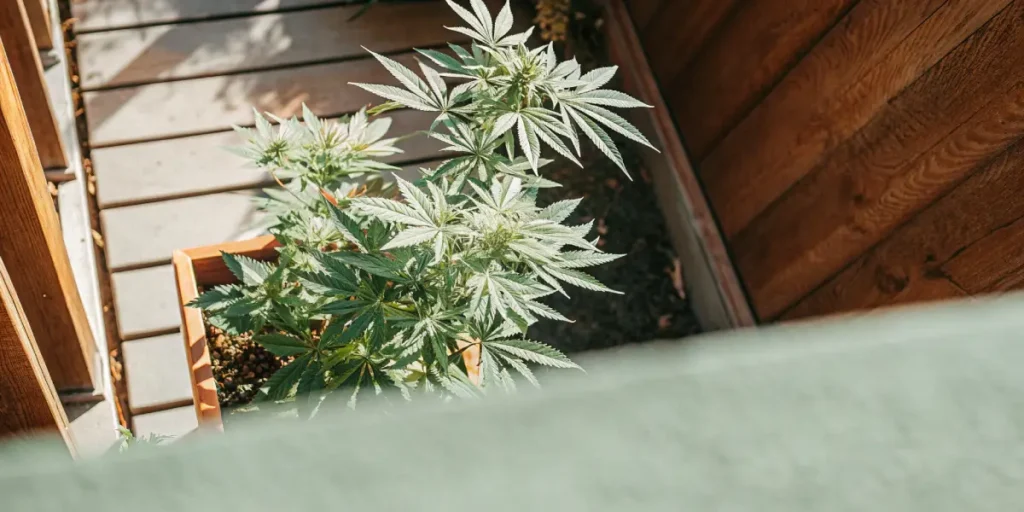
Impact of Light Receptors on Cannabis Yield
Yield is the ultimate goal for any cannabis grower. Light receptors, or photoreceptors, are key players in this. They help the plant make the most of available light, optimizing photosynthesis and growth. When you understand how these receptors work, you can fine-tune your grow room for maximum output.
Consider setting up a light schedule that mimics natural sunlight. This approach can significantly impact the growth and yield of strains like Blue Dream. Adjusting your lighting to suit the role of photoreceptors in cannabis plant growth can lead to bigger, healthier plants.
Light management requires careful planning and execution, especially when it comes to maximizing yield. The impact of light receptors on cannabis yield is profound, as they ensure the plant efficiently converts light into energy. This energy is crucial for photosynthesis and the synthesis of compounds like THC and CBD, directly affecting the plant’s overall productivity.
Utilizing advanced lighting systems that allow for precise control over the light spectrum can further enhance the impact of light receptors on cannabis yield. By balancing red and blue light exposure, growers can create a growth environment that supports both vegetative development and flowering, ultimately increasing the plant’s overall yield potential. This strategic approach underscores the importance of understanding what is the role of photoreceptors in cannabis.
- Use LED lights that offer a full spectrum to mimic natural sunlight.
- Experiment with different light cycles to see how your plants respond.
- Keep a diary of light conditions and plant responses for future reference.
- Consider the specific needs of each cannabis strain you grow.
Photoreceptor Influence on Cannabis THC Levels
THC levels can make or break your cannabis experience. Photoreceptors have a hand in this too. By influencing how plants grow and flower, they indirectly affect THC production. For strains like Banana Kush, known for its high THC content, getting the light conditions right is crucial.
In simple terms, more light means more energy for the plant to convert into cannabinoids like THC. However, it’s not just about quantity; the quality of light matters too. A balanced spectrum can lead to higher THC levels, making your harvest more potent.
Knowing the photoreceptor influence on cannabis THC levels involves recognizing how these receptors regulate the plant’s energy use. By optimizing light conditions, growers can enhance the plant’s ability to produce cannabinoids, leading to higher THC concentrations. This is particularly important for strains that are bred for potency.
Besides to light quality, the duration of exposure also plays a significant role in THC production. Extended light periods can provide the plant with more energy to allocate toward cannabinoid synthesis, further emphasizing the importance of knowing what is the role of photoreceptors in cannabis. By carefully managing these factors, growers can achieve a harvest that meets their desired potency levels.
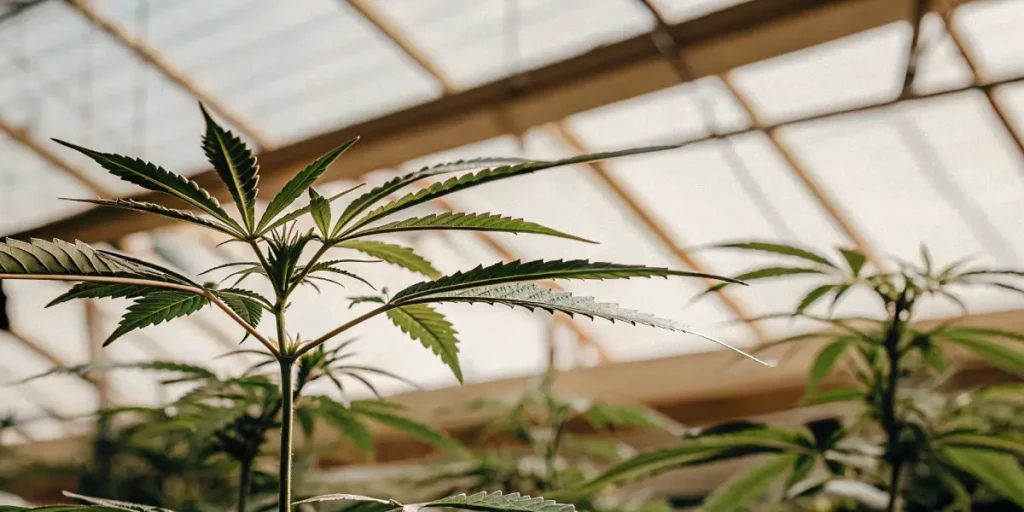
FAQs
How do photoreceptors influence cannabis plant growth?
Photoreceptors are crucial for regulating plant growth. They absorb light and send signals that direct how a cannabis plant grows, affecting everything from leaf size to stem thickness. This means that by controlling the light your plants receive, you can manipulate their growth patterns.
For instance, strains like Blue Dream thrive when exposed to specific light conditions. By knowing the function of photoreceptors in cannabis plant growth, you can optimize these conditions to boost development. Whether you’re growing indoors or outdoors, knowing how to use light effectively can greatly enhance your results.
Photoreceptors act as the plant’s internal clock, dictating growth responses based on light cues. They help synchronize various growth processes, ensuring the plant’s resources are used efficiently. When growers understand how photoreceptors influence cannabis plant growth, they can tailor their cultivation techniques to support the plant’s natural rhythms.
This synchronization is especially important for optimizing plant structure and vigor. By strategically adjusting light exposure during different growth stages, growers can influence plant morphology, encouraging traits like robustness and resilience. This comprehensive approach to light management is a testament to the significant role of photoreceptors in cannabis plant growth.
What is the impact of light receptors on cannabis yield?
Light receptors have a direct impact on yield. They help the plant utilize light more efficiently, which is crucial for photosynthesis. The more efficient this process, the more energy the plant has to grow, resulting in greater yield. Strains like Banana Kush benefit from optimized light exposure, leading to more abundant harvests.
Using full-spectrum LED lights can mimic the natural sun and help maximize your yield. Additionally, adjusting light cycles to match the plant’s growth phase can further enhance output. The role of photoreceptors in cannabis growth and yield cannot be overstated.
To fully harness the impact of light receptors on cannabis yield, growers must consider both the intensity and duration of light exposure. Light receptors modulate the plant’s photosynthetic efficiency, directly correlating to the amount of biomass produced. This knowing allows growers to fine-tune their lighting strategies for optimal growth and productivity.
Furthermore, light receptors’ influence extends beyond yield to affect the overall quality of the harvest. By providing the right light conditions, growers can enhance cannabinoid and terpene profiles, resulting in a more flavorful and potent product. This comprehensive knowing of light management highlights the vital role of photoreceptors in cannabis cultivation.
Can adjusting light affect cannabis flowering times?
Yes, adjusting light can significantly affect flowering times. Photoreceptors help cannabis plants determine when to flower based on light exposure. By manipulating light cycles, you can encourage plants to flower earlier or later, depending on your needs.
For example, reducing light exposure to mimic shorter days can trigger flowering in a strain like Runtz. This is especially useful for growers looking to time their harvests precisely. Understanding how photoreceptors affect cannabis flowering can give you more control over your grow cycle.
The ability to control flowering times is a powerful tool in cannabis cultivation, allowing growers to synchronize harvests and manage plant cycles effectively. By knowing how photoreceptors affect cannabis flowering, cultivators can create environments that prompt timely transitions from vegetative growth to flowering.
This control not only impacts the timing of harvests but can also influence the plant’s characteristics, such as bud size and density. Adjusting light exposure to optimize flowering times is a strategic approach that can enhance both the quality and quantity of the yield, demonstrating the crucial role of photoreceptors in cannabis flowering management.
What types of photoreceptors are important in cannabis cultivation?
The main types of photoreceptors in cannabis are phytochromes and cryptochromes. Phytochromes respond to red and far-red light, playing a crucial role in flowering. Cryptochromes react to blue light, influencing vegetative growth.
Knowing which photoreceptors are active can help you optimize light conditions for your plants. For example, increasing blue light can promote leaf growth, while red light can encourage flowering. Leveraging these insights can improve both yield and quality.
The diversity of photoreceptor types in cannabis cultivation underscores the need for a nuanced approach to lighting. Phytochromes and cryptochromes each play distinct roles, with phytochromes primarily affecting flowering and cryptochromes influencing vegetative growth. By tailoring light conditions to these receptors, growers can optimize plant development at every stage.
This knowing allows for more precise control over the cultivation process, enabling growers to enhance specific traits like height, leaf density, and bud formation. A comprehensive grasp of the different photoreceptor types in cannabis cultivation can lead to more successful and bountiful harvests, highlighting their importance in the overall growth strategy.
How do photoreceptors influence cannabis THC levels?
Photoreceptors indirectly influence THC levels by regulating growth and flowering. More efficient light use means more energy for THC production. For high-THC strains like Banana Kush, optimizing light conditions can lead to more potent buds.
Balancing the light spectrum between blue and red can enhance cannabinoid production. Each strain has unique requirements, so monitoring and adjusting your lighting setup can maximize THC levels. Knowing this aspect of cannabis cultivation is key to achieving a high-quality harvest.
The photoreceptor influence on cannabis THC levels is a complex interplay of light management and plant biology. By optimizing light conditions, growers can ensure that the plant has sufficient energy to allocate toward cannabinoid synthesis, enhancing THC concentrations. This is particularly important for strains specifically bred for high potency.
Besides to the light spectrum, the timing and duration of light exposure also play critical roles in influencing THC levels. Extended light periods can promote more robust cannabinoid production, further emphasizing the importance of understanding what is the role of photoreceptors in cannabis. By mastering these factors, growers can achieve a harvest that meets their potency goals.


